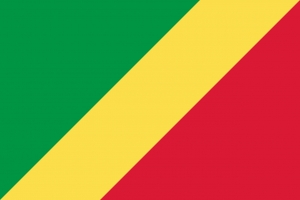Difference between revisions of "Language/Lingala/Vocabulary/Numbers-1-10"
m (Quick edit) |
m (Quick edit) |
||
| Line 8: | Line 8: | ||
Learning numbers in any language is crucial. It helps in both everyday life and more complex situations. In this lesson, we will learn how to count from 1 to 10 in Lingala and how to use them in sentences. This is the third lesson in the "Complete 0 to A1 Lingala Course" and is designed for complete beginners. | Learning numbers in any language is crucial. It helps in both everyday life and more complex situations. In this lesson, we will learn how to count from 1 to 10 in Lingala and how to use them in sentences. This is the third lesson in the "Complete 0 to A1 Lingala Course" and is designed for complete beginners. | ||
<span link>After mastering this lesson, these related pages might interest you: [[Language/Lingala/Vocabulary/Sorcery-and-witchcraft|Sorcery and witchcraft]] & [[Language/Lingala/Vocabulary/Friends-and-family|Friends and family]].</span> | |||
== Lingala Numbers 1-10 == | == Lingala Numbers 1-10 == | ||
| Line 50: | Line 52: | ||
Congratulations! You have learned how to count from 1 to 10 in Lingala and how to use them in sentences to ask someone's age and phone number. Keep practicing these numbers until you feel confident using them in conversation. In the next lesson, we will learn how to tell time in Lingala. | Congratulations! You have learned how to count from 1 to 10 in Lingala and how to use them in sentences to ask someone's age and phone number. Keep practicing these numbers until you feel confident using them in conversation. In the next lesson, we will learn how to tell time in Lingala. | ||
<span link>Well done on mastering this lesson! Don't miss these related pages to expand your knowledge: [[Language/Lingala/Vocabulary/Geography|Geography]] & [[Language/Lingala/Vocabulary/Work-and-School|Work and School]].</span> | |||
{{#seo: | {{#seo: | ||
|title=Lingala Vocabulary → Numbers and Time → Numbers 1-10 | |title=Lingala Vocabulary → Numbers and Time → Numbers 1-10 | ||
| Line 63: | Line 67: | ||
[[Category:Lingala-0-to-A1-Course]] | [[Category:Lingala-0-to-A1-Course]] | ||
<span gpt></span> <span model=gpt-3.5-turbo></span> <span temperature=1></span> | <span gpt></span> <span model=gpt-3.5-turbo></span> <span temperature=1></span> | ||
{{Lingala-Page-Bottom}} | {{Lingala-Page-Bottom}} | ||
<span links></span> | |||
Revision as of 23:45, 27 March 2023
Learning numbers in any language is crucial. It helps in both everyday life and more complex situations. In this lesson, we will learn how to count from 1 to 10 in Lingala and how to use them in sentences. This is the third lesson in the "Complete 0 to A1 Lingala Course" and is designed for complete beginners.
After mastering this lesson, these related pages might interest you: Sorcery and witchcraft & Friends and family.
Lingala Numbers 1-10
In Lingala, numbers are divided into two classes: lower numbers and higher numbers. In this lesson, we will focus on lower numbers from 1 to 10.
| Lingala | Pronunciation | English |
|---|---|---|
| moja | moh-jah | one |
| mbili | mm-bee-lee | two |
| tatu | tah-too | three |
| nne | n-nay | four |
| tano | tah-noh | five |
| sita | see-tah | six |
| saba | sah-bah | seven |
| nane | nah-neh | eight |
| tisa | tee-sah | nine |
| kumi | koo-mee | ten |
When counting from 1 to 10, we can use the word "na" to join two consecutive numbers. For example, "moja na mbili" means "one and two."
Using Numbers in Sentences
Now that we know how to count from 1 to 10 in Lingala, let's learn how to use them in sentences.
To ask someone's age in Lingala, you can say "Una miaka mingapi?" which means "How old are you?". To answer this question, we can use the following pattern: "Miaka yangu ni (number)", which means "My age is (number)". For example, "Miaka yangu ni sita" means "My age is six."
To ask for someone's phone number, we can say "Namba yako ya simu ni ipi?" which translates to "What is your phone number?". To answer this question, we start with the number "sifuri" which means "zero" in Lingala followed by the rest of the digits. For example, "Namba yangu ya simu ni sifuri nne tano saba tano saba tano tano tano" means "My phone number is zero four five seven five seven five five five."
Conclusion
Congratulations! You have learned how to count from 1 to 10 in Lingala and how to use them in sentences to ask someone's age and phone number. Keep practicing these numbers until you feel confident using them in conversation. In the next lesson, we will learn how to tell time in Lingala.
Well done on mastering this lesson! Don't miss these related pages to expand your knowledge: Geography & Work and School.
